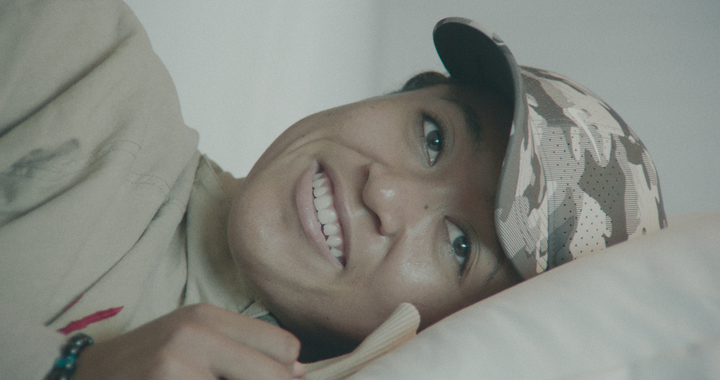“I’ve been always following people, and, like, sort of following blueprints of people. And now I feel like I didn’t really see a lane or a path that I like, and I was at a standstill,” Naomi Osaka says in the third episode of a new Netflix documentary series that gives audiences a window into her life. “And then I found that you have to make your own path.”
Directed by Oscar nominee Garrett Bradley, the docuseries “Naomi Osaka” has been in the works for several years and follows the tennis star throughout 2019 and 2020. Yet its release on Friday could not be more timely.
In the last few months, Osaka has been more outspoken about the importance of prioritizing her mental health. She withdrew from both the French Open and Wimbledon. Her candor has brought more attention to the toll of being in the public eye, especially as a young Black and Asian woman, and how sports media could rethink its coverage of star athletes.
Watching the documentary with this context in mind, it makes total sense why Osaka had to step back. At several points in the three episodes of the series, she wonders what it would be like to slow down and press pause. She laments not having the time and space to see the forest for the trees and figure out a path for herself.
There’s a lot of stillness throughout the docuseries. Many of the shots of Osaka illustrate how lonely it is to be at the pinnacle of her sport. Tennis is a solitary game, and much of it is a mental exercise. Add to that Osaka’s meteoric rise to fame in her early 20s, and it’s no wonder that the pressures she faces are crushingly immense.
“I think the amount of attention that I get is kind of ridiculous. No one prepares you for that, you know? It’s really weird sometimes,” she says in the documentary.
While watching the series this week, I couldn’t help but think about the Britney Spears conservatorship case, adding yet another layer of timeliness. While the specific circumstances of Spears’ fame are different and the stunning revelations about the conservatorship are particularly egregious, the larger themes are unfortunately all too similar.
When you become world-famous at a young age, and all of your successes and failures receive outsized attention, it’s exceedingly difficult, perhaps even impossible, to gain perspective and see the bigger picture of what you want in your life. There are more and more people involved in every decision — and more and more people to please.
Throughout the docuseries, while Osaka finds opportunities to gain control and agency, she struggles with the weight of expectations and the ways fame can become an unrelenting machine. She has to somehow be “enough” for everyone: for the people around her and for the public. And, as a biracial woman, she also faces undue criticism for not being Black “enough” or Asian “enough.”
The series follows Osaka through a tumultuous time in her career. In 2018, she soared to stardom as the upstart who defeated the legendary Serena Williams, one of her idols, in the U.S. Open final. But her success meant that there would always be an impossibly high bar to continually meet. In 2019, she had several stunning defeats at major tournaments that were magnified by the fact that, as one of the sport’s biggest stars, her every move was heavily scrutinized and dissected.
In one scene at a press conference at last year’s Australian Open, where she lost in the third round, Osaka tells reporters about the weight of it all.
“We came here to win the tournament, and I’m sort of the vessel that everyone’s hard work is put into, and I wasn’t able to do what I was supposed to do,” she says. “I feel like I get tested a lot — like, life’s just full of tests. Unfortunately for me, my tests are tennis matches, and you guys see them. So I just have to find a way to navigate through it, if that makes sense.”
It’s hard not to feel for her in these moments and hope that people can give her some grace. At the same time, during the period the docuseries covers, she also finds her voice as a public figure — and seems to embrace that it’s OK to be a work in progress. Osaka is changing her sport and changing the perception of what a young athlete and a young woman of color in the public eye can do and be.
Her journey in the documentary is a hopeful reminder that for many of us, there’s no existing blueprint for our lives and careers. We can and should draw our own blueprints, and they can be incomplete. It’ll be exciting to see what she does next, in whatever way she chooses and with however much time and space she needs.
“Naomi Osaka” is now streaming on Netflix.
RELATED…
Related
Trending
Source: Read Full Article












